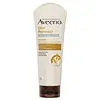What's inside
What's inside
 Key Ingredients
Key Ingredients

 Benefits
Benefits

 Concerns
Concerns

 Ingredients Side-by-side
Ingredients Side-by-side

Water
Skin ConditioningCellulose
AbsorbentCocamidopropyl Betaine
CleansingGlycerin
HumectantGluconolactone
Skin ConditioningNiacinamide
SmoothingSodium Chloride
MaskingXanthan Gum
EmulsifyingAvena Sativa Kernel Flour
AbrasiveSodium Benzoate
MaskingCitric Acid
BufferingSodium Hydroxide
BufferingMicrocrystalline Cellulose
AbsorbentCarrageenan
CI 77491
Cosmetic ColorantCI 77492
Cosmetic ColorantCI 18820
Cosmetic ColorantSalicylic Acid 2%
MaskingWater
Skin ConditioningSodium C14-16 Olefin Sulfonate
CleansingGlycerin
HumectantCocamidopropyl Betaine
CleansingMicrocrystalline Cellulose
AbsorbentAcrylates Copolymer
Parfum
MaskingPolysorbate 20
EmulsifyingSodium Hydroxide
BufferingC12-15 Alkyl Lactate
EmollientBenzalkonium Chloride
AntimicrobialPolyquaternium-7
Disodium EDTA
Menthol
MaskingCocamidopropyl Pg-Dimonium Chloride Phosphate
Sodium Benzotriazolyl Butylphenol Sulfonate
UV AbsorberCarrageenan
Agar
MaskingAscorbyl Palmitate
AntioxidantIron Oxides
CI 19140
Cosmetic ColorantCI 16035
Cosmetic ColorantMica
Cosmetic ColorantCI 73360
Cosmetic ColorantTitanium Dioxide
Cosmetic ColorantSalicylic Acid 2%, Water, Sodium C14-16 Olefin Sulfonate, Glycerin, Cocamidopropyl Betaine, Microcrystalline Cellulose, Acrylates Copolymer, Parfum, Polysorbate 20, Sodium Hydroxide, C12-15 Alkyl Lactate, Benzalkonium Chloride, Polyquaternium-7, Disodium EDTA, Menthol, Cocamidopropyl Pg-Dimonium Chloride Phosphate, Sodium Benzotriazolyl Butylphenol Sulfonate, Carrageenan, Agar, Ascorbyl Palmitate, Iron Oxides, CI 19140, CI 16035, Mica, CI 73360, Titanium Dioxide
 Reviews
Reviews

Ingredients Explained
These ingredients are found in both products.
Ingredients higher up in an ingredient list are typically present in a larger amount.
Carrageenan comes from red seaweed or algae. It is made up of polysaccharides and a highly flexible compound. Red algae cell walls are rich in carrageenan.
In cosmetics, it helps to thicken the texture. Studies show carrageenan extracted from red algae possess antioxidant properties. Components found in carrageenan include: lipids, fatty acids, Vitamin E, proteins, and several amino acids.
Learn more about different types of algae.
Carrageenan is also commonly used in medicine and food. It is a vegan alternative to animal-based gelatin.
Learn more about CarrageenanCocamidopropyl Betaine is a fatty acid created by mixing similar compounds in coconut oil and dimethylaminopropylamine, a compound with two amino groups.
This ingredient is a surfactant and cleanser. It helps gather the dirt, pollutants, and other impurities in your skin to be washed away. It also helps thicken a product and make the texture more creamy.
Being created from coconut oil means Cocamidopropyl Betaine is hydrating for the skin.
While Cocamidopropyl Betaine was believed to be an allergen, a study from 2012 disproved this. It found two compounds in unpure Cocamidopropyl Betaine to be the irritants: aminoamide and 3-dimethylaminopropylamine. High-grade and pure Cocamidopropyl Betaine did not induce allergic reactions during this study.
Learn more about Cocamidopropyl BetaineGlycerin is already naturally found in your skin. It helps moisturize and protect your skin.
A study from 2016 found glycerin to be more effective as a humectant than AHAs and hyaluronic acid.
As a humectant, it helps the skin stay hydrated by pulling moisture to your skin. The low molecular weight of glycerin allows it to pull moisture into the deeper layers of your skin.
Hydrated skin improves your skin barrier; Your skin barrier helps protect against irritants and bacteria.
Glycerin has also been found to have antimicrobial and antiviral properties. Due to these properties, glycerin is often used in wound and burn treatments.
In cosmetics, glycerin is usually derived from plants such as soybean or palm. However, it can also be sourced from animals, such as tallow or animal fat.
This ingredient is organic, colorless, odorless, and non-toxic.
Glycerin is the name for this ingredient in American English. British English uses Glycerol/Glycerine.
Learn more about GlycerinMicrocrystalline Cellulose is another name for refined wood pulp. It is used as an emulsifier and mattifying ingredient. As an emulsifier, it helps keep ingredients together.
Sodium Hydroxide is also known as lye or caustic soda. It is used to adjust the pH of products; many ingredients require a specific pH to be effective.
In small amounts, sodium hydroxide is considered safe to use. However, large amounts may cause chemical burns due to its high alkaline.
Your skin has a natural pH and acid mantle. This acid mantle helps prevent harmful bacteria from breaking through. The acid mantle also helps keep your skin hydrated.
"Alkaline" refers to a high pH level. A low pH level would be considered acidic.
Learn more about Sodium HydroxideWater. It's the most common cosmetic ingredient of all. You'll usually see it at the top of ingredient lists, meaning that it makes up the largest part of the product.
So why is it so popular? Water most often acts as a solvent - this means that it helps dissolve other ingredients into the formulation.
You'll also recognize water as that liquid we all need to stay alive. If you see this, drink a glass of water. Stay hydrated!
Learn more about Water